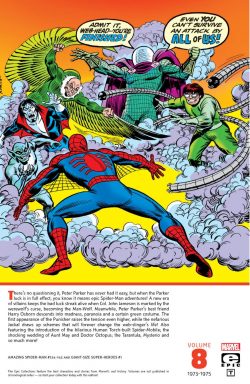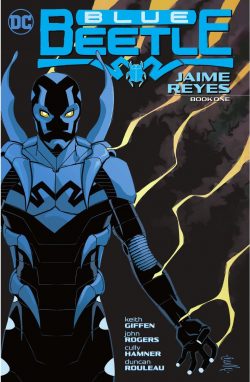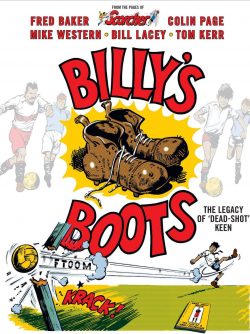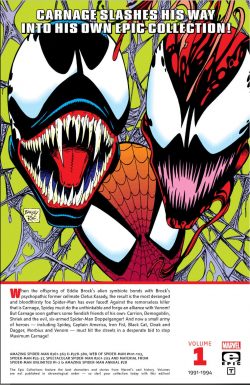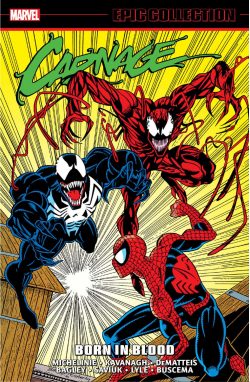
By Marzena Sowa & Sylvain Savoia, translated by Anjali Singh/Mediatoon Licensing (Europe Comics)
No ISBN: digital edition only ASIN: B07417JCN3
Win’s Christmas Gift Recommendation: Lyrical, Lovely, Laughter-Laced and Laudable… 10/10
It’s getting close to everyone’s most anticipated and ultimately disappointing festival time, and this year more than any other, the lead-up has been peppered with misery, anxiety, actual tragedy and terror. However, whatever your spiritual or official seasonal leanings – and None at All now officially counts as a denomination in the UK – the season for miracles and wonders always sparks our communal hope for something different and better so I’ve unearthed this lost delight to foster a little hope and joy…
As you’re surely aware by now, our Continental cousins are exceeding adept at exploring humanity’s softer and more introspective sides through the medium of comics, and this first tome in a sequence detailing the life of a little Polish girl growing up in an era of huge social change is a masterclass in emotive, evocative, vibrantly funny and ruthlessly sensitive storytelling to delight our senses by quietly affirming that people everywhere are basically the same…
Originally released in France in 2005 as Marzi, tome 1. Petite carpe this enthralling and charming episodic collation was the first of seven cartoon memoires by writer Marzena Sowa and her work/life partner Sylvain Savoia. They had met when she came to Paris from Poland as an exchange student, and he – a successful cartoonist and graphic novelist – soon realised the potential of her anecdotes as she spoke of growing up in a Soviet satellite nation at the tail end of the Cold War…
Their published collaborations were a hit in Europe and the story was first translated into English in 2011 for DC/Vertigo. At that time, media hype concentrated on the political aspects of her background, but if you can when reading this version, try to ignore that, just as the creators do.
It’s a shaping element and plot point, like boarding at Hogwarts or growing up in the Teen Titans, but never what the stories are about. This a tale of childhood and taking happiness wherever you find it, not a kids adventure like Emil and the Detectives or a historical horror story like The Diary of Anne Frank…
Marzna Sowa was born in Stalowa Wola, Podkarpackia, Poland on April 8th 1979. She grew up mostly ordinary like all her friends and family, but after achieving maturity during some of the most eventful years of the 20th century, in 2001 changed her life path. She left the Jagiellonian University of Krakow for the University of Bordeaux to complete studies in Literature.
On meeting Sylvain Savoia, mutual attraction became a working partnership and the first autobiographical Marzi volume came in 2005. The last to date was released in 2017. Her other award-winning tales include N’embrassez pas qui voulez, (Don’t Kiss Who You Want, 2013, art by Sandrine Revel) and Tej nocy dzika paprotka, (with Berenika Kolomycka).
After further schooling to become a videographer, Sowa has moved into Cinema, writing screenplays and directing documentaries while continuing to script comics such as La Grande Métamorphose de Théo (2022, with Geoffrey Delinte) and La Petite Évasion (2022, with Dorothée de Monfreid).
Her first collaborator Sylvain Savoia was born in 1969 in Reims and initially studied at the Saint Luc Institute in Brussels. In 1993 he co-founded art workshop 510TTC and crafted his first comics – Reflets Perdus – from a script by Jean-David Morvan, before beginning their extended series Nomad. Later successes included Al’Togoat (2003), Les Esclaves oubliés de Tromelin and Henri Cartier-Bresson, Allemagne 1945, supplemented by poster making, advertising art and training manual illustration and design.
Since 2018 he has helmed educational series Le Fil de l’Histoire raconté par Ariane & Nino, and enjoyed further success with Sowa in Les esclaves oubliés de Tromelin and Petit Pays. In 2020 he was made a Knight of the Order of Arts and Letters.
It begins as Christmas looms. ‘Communism doesn’t kill your appetite’ introduces 7-year-old Marzi, who’s nervously gearing up for the big day. It’s not about presents, but the fact that very soon every flat in the apartment block everybody she knows live in will have a fish in the bath. There are always shortages and long queues at the housing estate store, but somehow the market always has a carp for every customer to make the season traditional and perfect…
Marzi is smart and observant but perhaps thinks too much. She’s also – to her excitably loud and frequently angry mum’s consternation – a very picky eater, only barely aware of the effort her dad must make to get the fish. Of course the daughter is grateful, but also deeply concerned about once again sharing their toilet/bathroom with the creature until they eat her…
The situation sparks deep thoughts about eating animals. Marzi is luckier than most of her friends as her Aunt Niusia lives on a farm and the family always have access to extra food. However, the child’s visits are always fraught with unnoticed pragmatic brutality. Marzi has met cows, pigs, turkeys, chickens, cats, dogs and other creatures and fully understands why mum says you shouldn’t give animals names, but it doesn’t stop her trying to form a bond with the fish in the bath…
We learn more of her life on ‘The Social Landing’ where Marzi and the other kids in the block congregate. State controlled housing is short on amenities and variety (there are only two kinds of apartment available – small or bigger) and no play facilities, so the kids cluster around the elevator on her floor (the fifth) and play games vertically. Their favourite is messing with the lift buttons so that the carriage stops at every floor and they also like ringing doorbells and running away. Marzi is great at the latter but hampered in the former as she’s afraid of using the grim grey box and will always use the stairs if she can…
She has a strong bond with Andrzej, Magda, both Anias and especially feisty Monika, who always leads at everything, like that time Ania (1) and Andrzej’s mother pierced all their ears (except Andrzej and baby Magda!) and Monika’s mum gave them all their first earrings…
‘A carpet for life’ charmingly reveals the Poles’ utter obsession with ornate rugs and floor coverings and ‘Sun in winter’ details queuing culture and the Kupon (coupon system) dictating the dissemination of goods and foodstuffs, as seen through the eyes of the child stamping her freezing feet beside dad in the never-decreasing line for oranges: offering insights into what Marzi will and won’t eat and what her formidable mother will do to ensure fair shares for all…
Although she’s still young, Marzi spends a goodly part of her day ‘At School’. The cooks there understand her and the hot breakfasts are far more palatable. There are games and books and singing too and only thing she doesn’t like is how the little kids drool all over the toys…
It was always cold in the Soviet Union, and ‘Skowierszyn’ shares the joys of snow and sledding and visiting grandma who gets fashion magazines from cousin Janusz who works abroad. These are supposedly for Niusia – who is also a skilled seamstress – but become a beautiful inspiration for Marzi to stretch her mind and clothe her adored plastic doll…
More queuing – meat this time – is highlighted on ‘The Night of Waiting’ with dad and Uncle Zdzich making military style preparations to ensure success, after which Marzi develops deep shame and some potentially lifelong hang-ups when ordered to join the party to secure toilet paper in ‘Some poetry in rolls’…
Although dictatorial by diktat and “Communist” by command, Poland remained devoutly Catholic under Russian rule and we jump to the second most important event in the religious calendar for ‘A very wet Easter’ as Marzi and her folks head to rural Kamien to enjoy the festival with mum’s family. A hardworking, hard-drinking farming family dad cannot keep up with, their freer attitudes and lifestyle are a revelation to the child – as are the rather scary religious rituals they enjoy – but not as much as Marzi’s miraculous brush with death and subsequent notoriety after falling into a still frozen and exceedingly deep pond…
Dad works with Zdzich in the Huta Stalowa Wola, the city’s only factory, and that has its own perks, as seen in ‘All for one’ when every worker simultaneously takes the opportunity to buy a new fridge from the consignment just delivered, before his attempts at home entertainment give way to national fervour in ‘Our hero, the Pope!’ as Polish Pontiff John-Paul II makes his landmark visit. Of course the captivated adults never expected Marzi and her gang to recreate the event in their own inimitable irreverent manner, combining pomp and circumstance with a new block game involving the garbage chutes…
Although perhaps understandable, in the past many western observers have over-concentrated on the totalitarian regime (which is all but absent in this volume) and placed too heavy an emphasis on Soviet-spawned shortages, to the detriment of the real message here – that kids live in their own world and always try make the best of what they have.
Just imagine what British kids now will be writing about in 20 years when recalling their so-privileged childhoods of unnecessary privation, cold, and hunger in the soon-to-be nostalgia-ridden years of 2021 to 2024…
A skilfully shaped and gloriously enthralling paean to growing up in interesting times (and aren’t they all?), Little Carp is a celebration of independent thought: blending pranks in lifts and staircases, new fun with familial strangers and with doing the tedious stuff adults tell you to. Making fun where you can as your awareness deepens and a mature world is built by ever-expanding experience, and how we all grow up to be our parent in unbalanced doses of imitation and utter rejection…
The more observant amongst you might have noticed that my extended family is Polish and I have some actual experience of life under the Soviets back then. My many, many cousins experienced lives very like Marzi’s and endured the mixed Christmas delights of a big fish sharing your house before being reluctantly consumed, as well as all the other different but similar minor moments of growing up. If pushed, they might talk of shortages and restrictions, but they’d far rather discuss music or movies or football. And sex. They always want to know who’s doing who, but maybe that’s just my lot…
Everything else was just dull grown up stuff: boring, inescapable but sometimes delayable and just the way things were.
Marzi is definitely about independence and freedom, but it’s personal not national and inherently hopeful: the tale of a fish out of water learning to swim her own way. If you want polemical condemnation and supportive sympathy for your own prejudices, look somewhere else. Better yet, stick around and see how a delightful and unique individual lived her own best life…
© 2017 – DUPUIS – SOWA & SAVOIA. All rights reserved.


